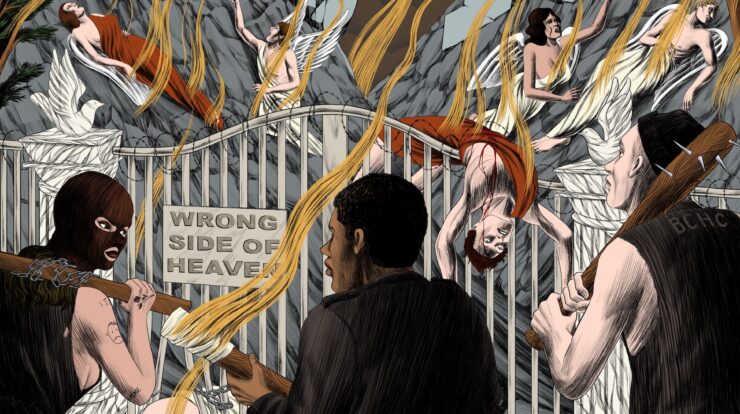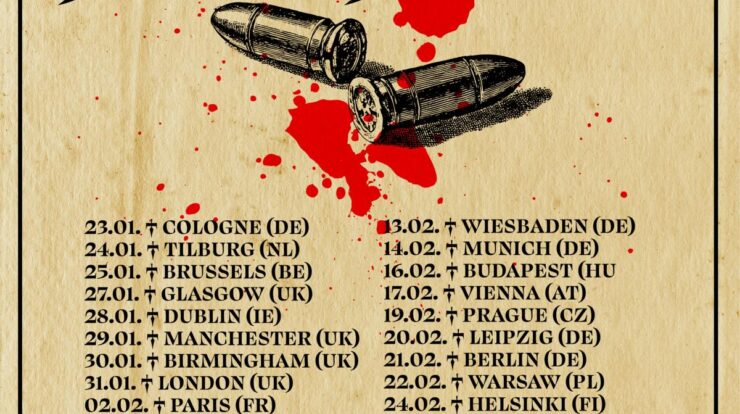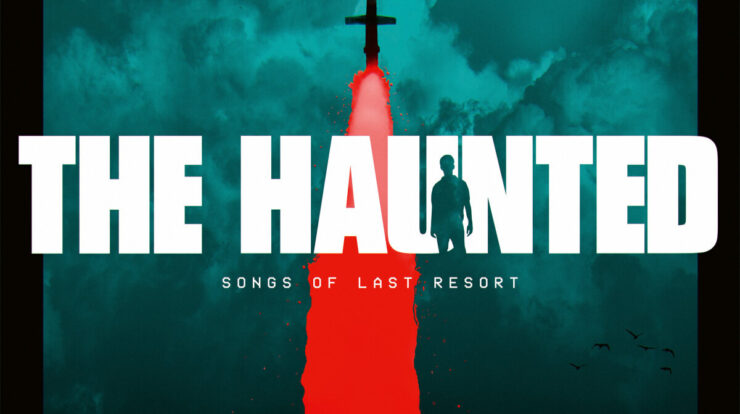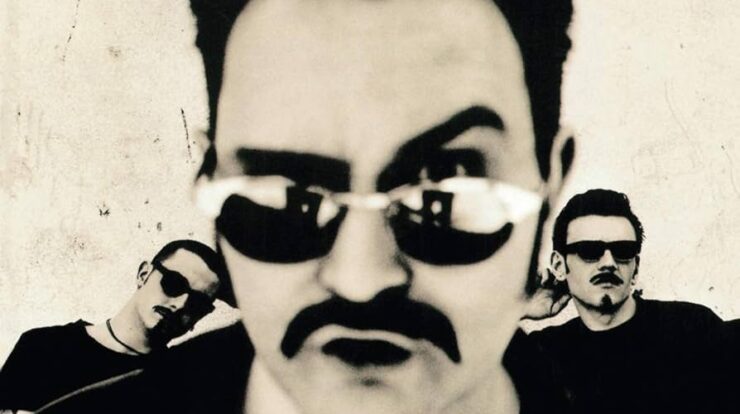
This post was originally published on this site
In 1995, THERAPY? were flying high, in every possible sense. In February of the previous year, the Northern Irish trio had released their second major label album Troublegum, which saw them reach a level of commercial success previously only reserved for more established, arena-filling metal bands. Singles like Screamager, Trigger Inside and Nowhere had bothered the uppermost reaches of the UK charts and seen the band appearing on such legendary TV shows as Top of the Pops and The Word. At the time, it felt like you were never more than 5 minutes away from a THERAPY? song. They became leaders in the nascent Britrock scene, alongside THE ALMIGHTY, THE WILDHEARTS and TERRORVISION and, needless to say, were very much exponents of the ‘work hard, play hard’ rock and roll ideal.
So, what next? How could these three young lads from Larne capitalise on this sudden rise to stardom? Well, their record label A&M Records were very much hoping for a pop-punk-metal-filled Troublegum 2.0, seeing as that record had produced so many successful songs, and this is one of the reasons the band were herded into Real World Studios in Bath so quickly after the end of the Troublegum world tour. Unfortunately for A&M, though, the band had absolutely no intention of granting their label’s wishes.
There weren’t only disagreements going on between band and label though, as the band members themselves were also falling apart. Thanks to the demands of an intense touring schedule combined with music industry fatigue and a growing penchant for alcohol and substances, by the time the band entered Real World, guitarist and singer Andy Cairns and drummer Fyfe Ewing were no longer even speaking. As a result, bassist Michael McKeegan and producer Al Clay found themselves acting as mediators between the pair, which only led to a bubbling atmosphere of dread and tension as the recording sessions got underway, only heightened by the fact that the band had hardly even written any material at this point.
Although the band had recorded demos for the new album at the back end of 1994, the rollercoaster ride they were on meant that only three or four songs were really ready to go and even those were either only partially finished, lacked lyrics, or both of these things. In order to try and get on top of things, Cairns in particular embraced a new – and not entirely healthy – routine of staying up all night, every night, in an attempt to write the missing lyrics largely under the influence of those bedfellows of creativity, amphetamines and alcohol.
This febrile studio atmosphere is immediately apparent on the album’s first track Epilepsy, a song so jagged and frantic it’s the musical equivalent of grinding your jaw in a stranger’s kitchen at 5am, wondering where you are and how you got there, as the fear washes over you from the stomach outwards. “I’ve got a problem!” yells Cairns in the opening lyric. Yeah mate, we can tell. This bubbling-up of madness continues to build throughout much of the album, even during the poppier moments, like on singles Loose and Stories which almost come across as inverted versions of Nowhere and Trigger Inside. Those songs were hardly happy-clappy summer singalongs but here there is a wilder, more frazzled edge which imbues the album with an unpredictable energy that even now feels fresh and unlike anything else THERAPY? have released before or since. Despite this change though, these songs still entered the UK singles charts, showing that the band were still being embraced by (some of) the mainstream, despite everything.
Naturally, though, the highs must be followed by the lows and, good grief, are there some comedowns on Infernal Love, most noticeably in the trilogy of darkness formed by the songs Me Vs. You, A Moment Of Clarity and the haunting, cello-led cover of HUSKER DU’s Diane. At times monstrously bleak and at others beautifully haunting, these three songs sum up the ambition of the band at this point in their career but also the utter darkness that had taken hold of them. Album closer 30 Seconds captures this range of emotions in its five and a half minutes of thrash-driven punk, Cairns delivering the shocking, explosive opening lyrics with a twisted snarl in his voice: “Buggered by a priest when you were seven years of age, the age of understanding came with blood and semen stains.” By the time the song hits the seemingly endless refrain of “there’s one thing that I should remember – there is a light at the end of the tunnel” you really sense the band’s desperation to believe in its sentiment.
Unfortunately, that light at the end of the tunnel was a long time coming. Not long after the first leg of the Infernal Love tour, powerhouse drummer and founding member of the band Ewing decided he’d had enough and left, while in the press the album received something of a critical mauling compared to its predecessor. The band continued to enjoy a great deal of success though, appearing high up on the bill at 1995’s Monsters of Rock festival (much to the surprise of many “true metal” fans) and going on, with a new lineup, to record a number of acclaimed albums since.
Time, of course, is a great healer, however, and today Infernal Love is viewed as something of a masterpiece. They never did quite reach the heady heights of everything Troublegum brought them again but, in hindsight, that’s probably a huge relief for the mental health of everyone involved.
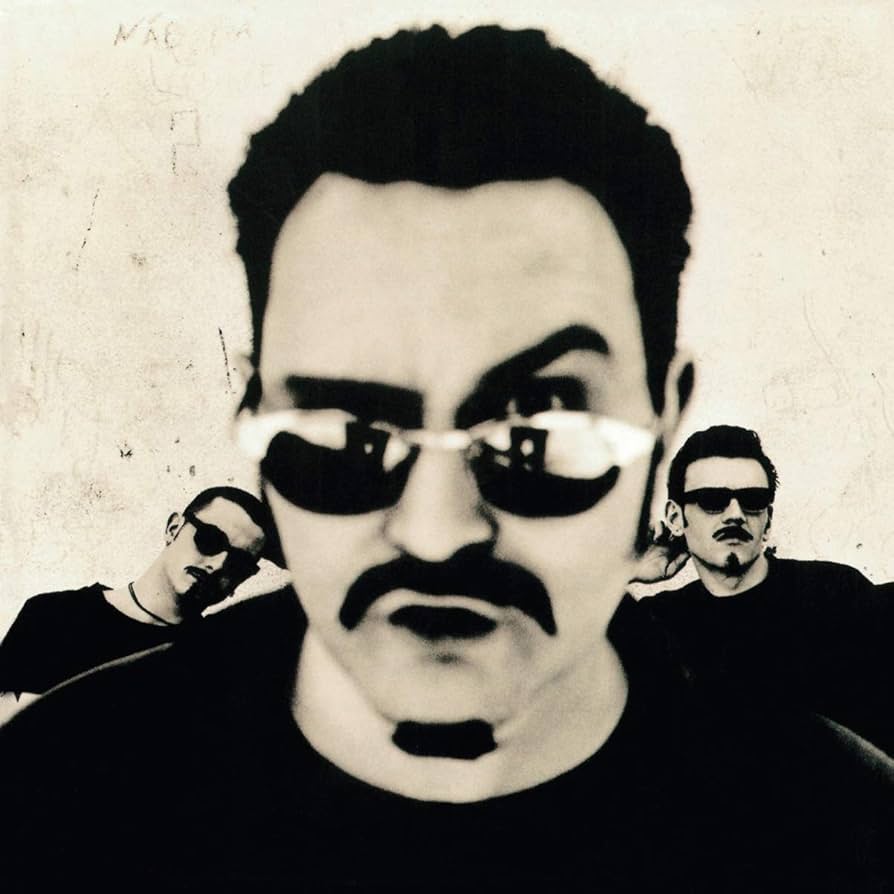
Infernal Love was originally released on June 12th, 1995 via A&M.
Like THERAPY? on Facebook.
The post HEAVY MUSIC HISTORY: Infernal Love – Therapy? appeared first on Distorted Sound Magazine.

